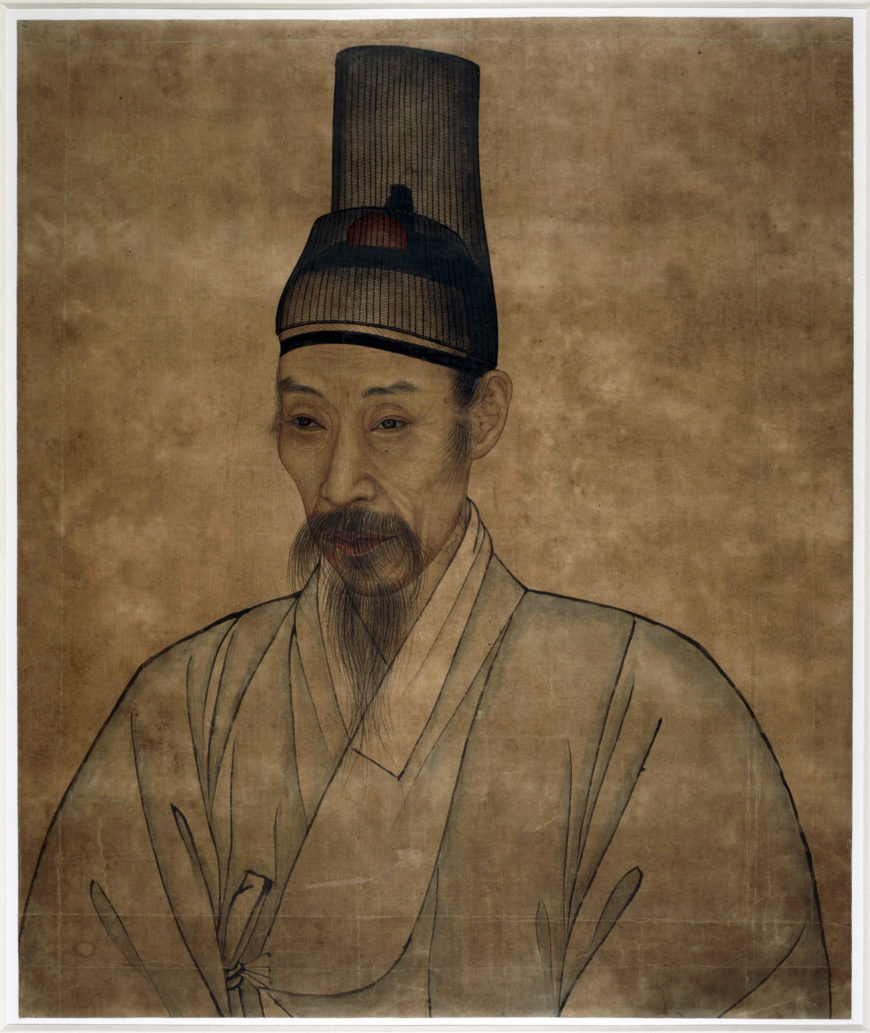
Yi Che-gwan (attributed to), Portrait of a Confucian scholar, a painting, late 18th – early 19th century, Late Choson/Joseon dynasty, Korea, 45.0 x 54.4 cm (© The Trustees of the British Museum)
There is a very similar painting in the National Museum of Korea. The similarities of the portraits suggest that they are of the same man, and both painted by Yi Che-gwan (1783-1837). This portrait appears to be the later, as the sitter seems to have aged.
Western painting techniques were introduced to Korea through Jesuit missionaries in China in the eighteenth century. This influence is apparent here, perhaps in the shape of the eyes, but certainly in the details of the face, such as the wrinkles and the use of repeated minute lines (hatching) to show shading. He wears a traditional horse-hair indoor hat (t’anggon).
Earlier Korean portraits were more interested in capturing a sense of the sitter’s ‘spirit’ rather than in portraying an actual physical likeness. However, during the prosperous eighteenth century it became fashionable in portraiture as well as in chin’gyong, or ‘true-view’ painting, of real scenes from the Korean landscape.
© The Trustees of the British Museum

